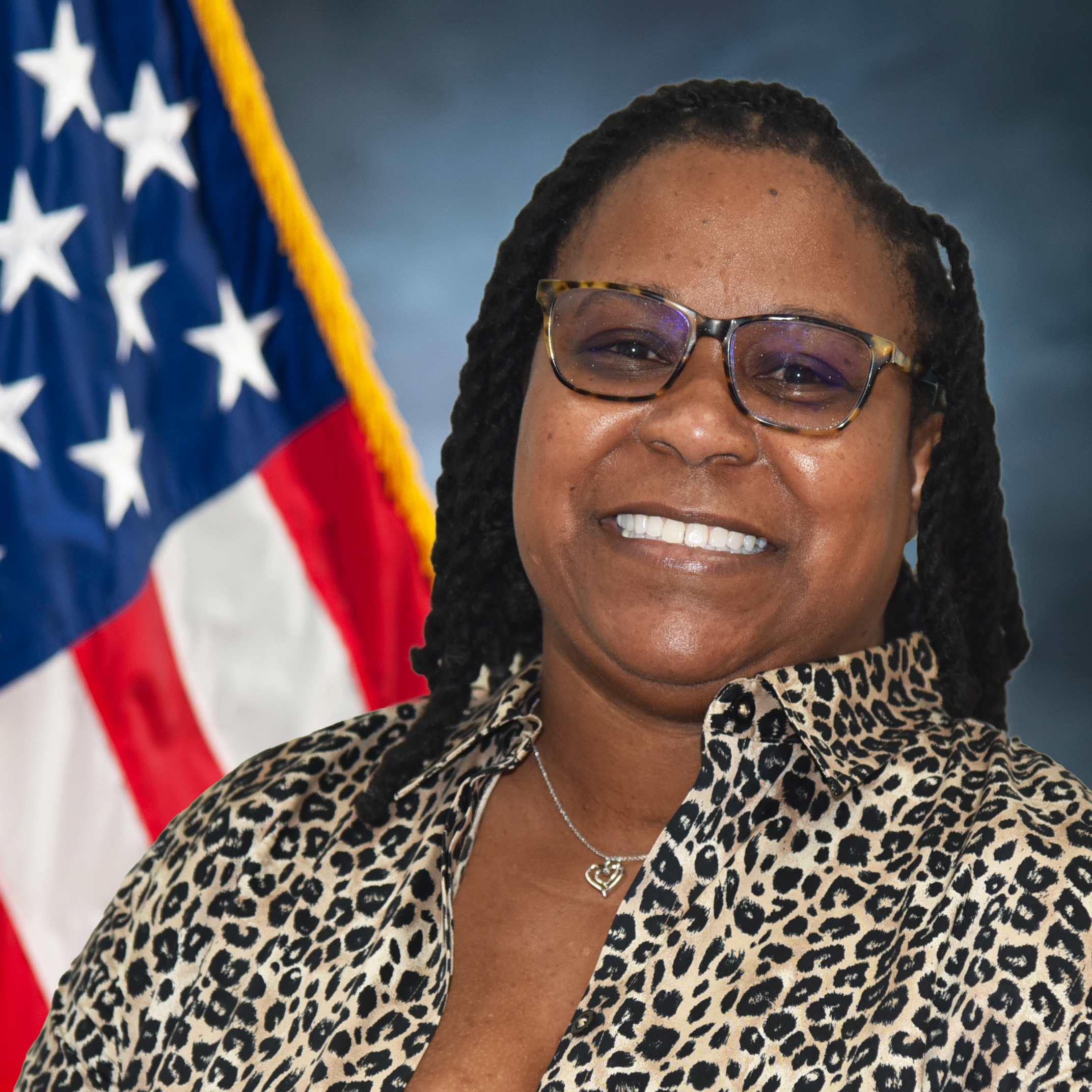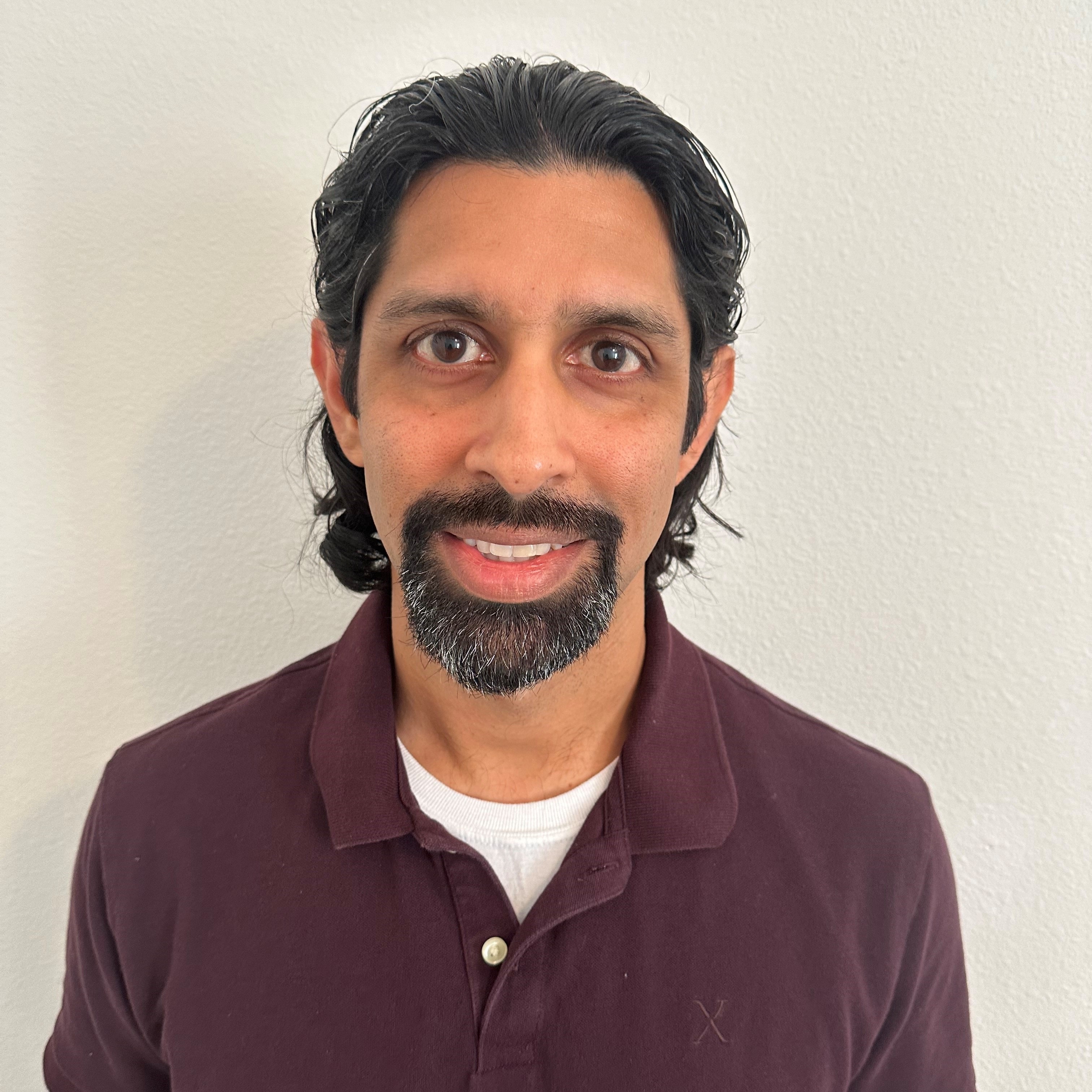Attention A T users. To access the menus on this page please perform the following steps.
1. Please switch auto forms mode to off.
2. Hit enter to expand a main menu option (Health, Benefits, etc).
3. To enter and activate the submenu links, hit the down arrow.
You will now be able to tab or arrow up or down through the submenu options to access/activate the submenu links.
Locator
Contact
Search
Employee Spotlight
July 9, 2024
Amish Desai, Clenetra Woods-Dickson, and LaTishe Ridioux
VA Houston Health Care



This year, we’re spotlighting VA’s Housing First approach through a series of interviews with VA employees and taking a look at how they’re working to end Veteran homelessness through this approach. Learn more about Housing First.
Q: Can you describe your roles on the team?
Amish: I am a coordinated entry specialist and point of contact for the Supportive Services for Veteran Families (SSVF) program.
Clenetra: I am a Health Care for Homeless Veterans (HCHV) program outreach social worker. I help vulnerable individuals overcome barriers to obtaining housing, support community events, and provide case management services.
LaTishe: I’m a Homeless Patient Aligned Care Teams (HPACT) social worker, and I also cover at our Community Resource and Referral Center if needed.
Q: What does Housing First mean to you personally, and why is this approach important in your work?
LaTishe: It means that we should first address necessities like having food and a place to stay. Barriers should be minimal, and wraparound services should be available. Once a Veteran is housed, they can hopefully begin to think about dealing with other issues that may have contributed to their homelessness, such as mental health care, substance abuse, and medical conditions.
Clenetra: The Housing First approach encompasses health improvement and the reduction of harmful behaviors, and these outcomes are cemented by growth in income. I spent my initial days at VA attending to patients in the mental health unit and witnessed Veterans working through multiple psychosocial problems, including complex posttraumatic stress disorder (PTSD), substance use disorders, and unemployment. Using the Housing First approach, we helped Veterans achieve a sense of stability. Having access to a permanent residence is rewarding for many of those who have nearly given up.
Amish: It always makes me think of Maslow’s hierarchy of needs. When I first began at the VA, I was a HUD-VA Supportive Housing (HUD-VASH) program social worker, and I was able to see firsthand how the Housing First approach empowered Veterans to work through multiple and often simultaneous psychosocial challenges and achieve a sense of stability that even they sometimes didn’t believe was possible. It all starts with getting them off the street and into permanent housing with supportive services. The Housing First approach serves as a reminder that, however complicated an individual’s circumstances may be, interventions geared toward securing basic needs like housing are essential in helping them move forward.
Q: What do you think people get wrong about Housing First, and what would you like them to know instead?
Amish: I feel that the most common misconception is that the ultimate goal is achieving housing. It’s not. It’s designed to be a springboard to other interventions and supportive services. It’s Housing First—not housing, the end.
LaTishe: There’s a misconception that once a person is housed all their other problems instantly go away because they have a place to live—but that’s when the hard work actually begins. If they have a plethora of other issues, which could have played a role in them becoming homeless, and they are not addressed, then the objective of them remaining housed in most cases, sadly, will not last.
Clenetra: Housing First is not a universal solution to homelessness. The critical variable is the beneficiary’s self-determination to overcome homelessness. Some are not ready to embrace the solution. Although housing has the potential to provide the stability needed to support other goals, these secondary gains depend on the individual’s commitment.
Q: Amish, how do you work with your local Continuums of Care (CoCs) and other community partners to ensure that the system prioritizes the most vulnerable Veterans and has low barriers to entry for services? How do you overcome challenges working with partners?
Amish: Regular communication is key! Over the years, we have built strong inroads with our CoC partners and fellow homeless service providers, which go a long way toward helping identify our most vulnerable populations.
Our expanded HCHV outreach team has continued to develop these relationships to ensure warm handoffs and joint outreach efforts so our Veterans can access the services they need. I also regularly schedule conference calls to help us be proactive instead of reactive with respect to complex cases.
I think challenges are natural when you have such large systems working together on a goal as complex as ending Veteran homelessness. I often feel working through said challenges can result in process improvements when there’s a relationship to discuss them openly, and Veterans are approached with the right perspective. A big part of it is recognizing that we are all on the same team, and that even disagreements usually come from a good place.
Providing ongoing education around Housing First, as well as updates to VA policies and resources, can go a long way toward ensuring our collaborative efforts remain efficient. Staying plugged in to changes within the CoC is equally important, as it ensures our coordinated entry system remains in sync.
Q: Clenetra, although outreach is not a specific element of Housing First, it’s incredibly important to identify the most vulnerable Veterans to prioritize them for services. What are some specific ways your outreach team tries to identify and engage with Veterans?
Clenetra: The outreach team targets a population that is particularly difficult to engage. Targeting Veterans at community events and driving through a community handing out cards, stickers, or "survival kits" with program contact information have been helpful. We also go to identified encampments to build relationships with Veterans and offer case management. We develop a regular presence at other community locations that are often frequented by people with very low incomes who may be experiencing a housing crisis.
Q: LaTishe, many Veterans enter our programs with acute or chronic medical conditions, so connecting them to physical and mental health care is critical. How does the HPACT team work to connect with Veterans who need care?
LaTishe: Our HPACT team works tirelessly to ensure that we connect Veterans to the medical and mental health care that they need. When I encounter a homeless Veteran who is not connected to care, I explain to them the services that are available through HPACT. Often, the Veteran will see our HPACT nurse on their initial visit with me and then be scheduled to see the primary care provider later, unless there is an urgent issue that needs to be addressed that day.
If the Veteran is exhibiting mental health concerns, I contact the HPACT psychiatrist, who will meet with the Veteran virtually. If the HPACT psychiatrist feels that the Veteran needs further assessment or care, she will contact mental health staff in the emergency room (ER), and we’ll escort the Veteran to the ER to be seen in person. We remain with the Veteran until ER staff escort the Veteran to the triage area.
I also screen Veterans who are new to the area, educate them on services provided through the program, and assist Veterans with enrolling into the program of their choice.
Q: Lastly, what’s your “why” for the work you do?
Amish: I know this might sound like a cliché, but it comes down to something my brother taught me when I was young. If you can do something good, you should. Homelessness really can happen to anyone, and every time it does, it is devastating. Being able to create change in a positive way and help Veterans get back on their feet brings me a deep sense of meaning and fulfillment in my life.
LaTishe: I’ve always told my children that everyone has to work, and if you can do something you love, it makes the work easier. I love what I do. I guess you could say that my “why” is that I think helping others is one of the most selfless things we can do. There are many other programs within the hospital that I could work in, but I don’t think any of them would give me the satisfaction that I get from helping a Veteran get housing and other services they may need.
Clenetra: Not to sound scripted, but the VA’s core values of integrity, commitment, advocacy, respect, and excellence define who I am as an individual. Being able to collaborate on a plan with someone experiencing homelessness for a lengthy time and seeing them gain housing gives me humility, happiness, and satisfaction that I made a humongous positive impact on someone’s present as well as their future. I love my job!





























